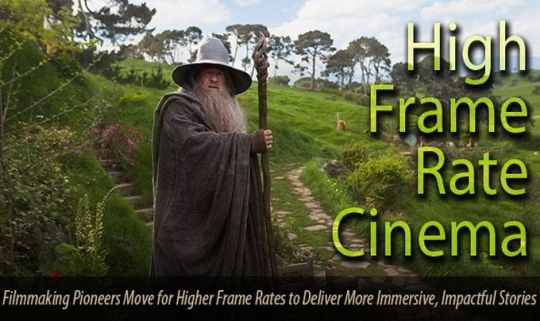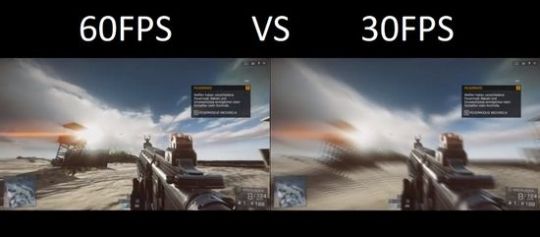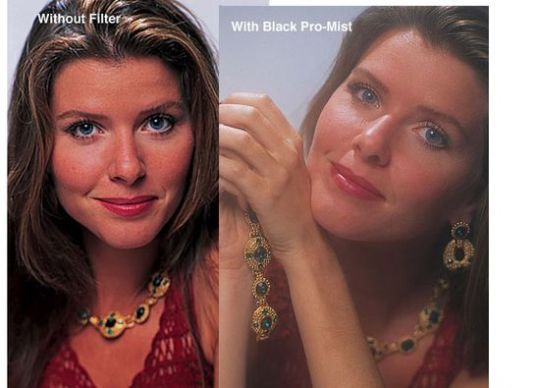#HighFrameRate
Explore tagged Tumblr posts
Text
youtube
#ManUnitedVsLiverpool#PLGameplay#2K23FIFA#FIFAGameplay#FIFA23#FootballGaming#60FPS#144HzGaming#4KResolution#NextGenFIFA#FootballLegends#ManUnited#LiverpoolFC#PremierLeague#FIFAGame#FIFA2023#UltimateTeam#GamingIn4K#HighFrameRate#FootballFans#SoccerGaming#FIFAAction#GameOn#FIFAGameplay2023#SoccerLife#FootballRivals#ManUnitedVsLiverpool2023#Youtube
0 notes
Link
As the PlayStation 5 generation reaches its midway point in 2024, Mark Cerny, the lead architect behind the console, offers a fascinating glimpse into the design process and his observations on the current gaming landscape. In a recent interview, Cerny delves into the challenges and opportunities of console development, highlighting some surprising trends in how developers and gamers are utilizing the PS5's capabilities. PlayStation 5 Generation The Delicate Dance of Console Design Cerny emphasizes the unique position consoles hold compared to PCs. Unlike building a generic computer, console architects like Cerny have the freedom to focus on specific functionalities and tailor hardware to seamlessly integrate with software. This allows for creative solutions, such as prioritizing powerful SSDs over traditional hard drives despite the potentially higher costs. This philosophy also extends to fostering innovations that benefit the entire gaming industry. For instance, Cerny points to the PS4's powerful GPU interfaces that improved DirectX responsiveness for PC users. Similarly, the PS5's high-performance SSD might nudge the PC world to prioritize the development of DirectStorage API for faster loading times. Essentially, Cerny believes console advancements can push the boundaries of PC technology as well. The Power of Foresight: Anticipating Developer Needs The four-year development cycle for consoles underscores the importance of anticipating future trends. Cerny highlights how creating powerful hardware enables developers to jumpstart the creative process sooner. However, predicting future gaming preferences isn't always an exact science. Surprises from the Developer Trenches Cerny freely admits to being surprised by the widespread adoption of ray tracing technology. Initially, he anticipated a slower integration of ray tracing, considering its demanding nature. However, the PS5 launched with games that actively utilized this technology, showcasing developers' eagerness to embrace its potential. The most unexpected trend, however, came from the gamers themselves. The Rise of Frame Rate Fidelity: A Gamer's Delight Cerny expressed significant surprise at the overwhelming focus on frame rates by modern gamers. Traditionally, console generations have witnessed a trade-off between graphical fidelity and frame rates (fps). Games with higher detail often prioritized 30fps for smoother performance. Cerny expected this trend to continue with the PS5, but the reality proved different. Instead, developers are prioritizing consistent 60fps gameplay even if it means sacrificing some graphical complexity. This shift aligns perfectly with gamer preferences, as studies indicate a strong preference for smoother, high-frame-rate experiences. While Cerny anticipated a focus on better visuals, the priority on frame rate reflects a significant change in gamer expectations. Looking Forward: A New Era for Gaming Cerny's insights provide a valuable window into the ever-evolving world of console gaming. The PS5's architecture, built with an eye toward future innovations, seems to be resonating with developers and players alike. As the generation progresses, it will be exciting to see how Cerny's foresight and the evolving demands of gamers shape the future of the PlayStation platform and the gaming industry at large. FAQs Q: What are some challenges of designing console hardware? A: One challenge is anticipating future gaming needs and designing hardware that can adapt to emerging technologies. Another challenge involves balancing powerful components within a budget and ensuring seamless integration with software. Q: How does the PS5's architecture benefit the PC industry? A: Advanced features like high-performance SSDs might encourage the PC world to prioritize similar innovations, such as the development of DirectStorage API. Q: What surprised Mark Cerny about current gaming trends? A: Cerny was surprised by the widespread adoption of ray tracing and the overwhelming focus on achieving consistent 60fps frame rates in games, even if it meant sacrificing some graphical detail.
#60fps#consoledesign#consoleinnovation#DirectStorageAPI#GameDevelopment#gamerpreferences#gamingindustry#gamingtechnology#GamingTrends#GPUinterfaces#graphicalfidelity#highframerates#MarkCerny#ninthgenerationconsoles#playstation#PlayStation5Generation#ps5#raytracing#smoothgameplay#SSD
0 notes
Text
Why the Xbox Series S is the Ultimate Gaming Console for 2024 🎮🔥

Looking for the perfect balance of power, speed, and affordability in a gaming console? The Microsoft Xbox Series S (512GB SSD) is your answer. Whether you're a casual gamer or a hardcore competitor, this sleek, next-gen console is built to deliver an immersive gaming experience like never before.
Why Gamers Love the Xbox Series S 🎯
✅ Next-Level Performance – Play at up to 120 frames per second, making gameplay smoother and more responsive than ever. ✅ Xbox Velocity Architecture – Say goodbye to long loading times with super-fast SSD storage. Jump in and out of games instantly. ✅ High Dynamic Range (HDR) – Experience richer colors and deeper contrast for jaw-dropping visuals. ✅ 10GB RAM Power – Designed for next-gen gaming, giving you the speed and performance you need. ✅ Backwards Compatibility – Play thousands of Xbox One, Xbox 360, and original Xbox games with enhanced graphics and faster load times. ✅ Game Pass Ready – Unlock a massive library of over 100 games (including day-one releases) with Xbox Game Pass Ultimate.
Perfect for Every Gamer 🎮
💥 Casual Gamers – Easy setup, instant access to hundreds of games, and budget-friendly pricing. 💥 Competitive Players – High refresh rates + low input lag = ultimate competitive edge. 💥 Streaming & Entertainment – Watch Netflix, Disney+, YouTube, and more in 4K Ultra HD.
Upgrade Your Gaming Experience Today!
The Xbox Series S is the best value next-gen console, offering insane performance in a compact, all-digital design. Whether you’re upgrading from an older Xbox or switching from another platform, this is the console you need.
🎮 Get yours now before they sell out! → Click here to buy
Disclaimer:
This post contains Amazon affiliate links. As an Amazon Associate, I earn from qualifying purchases at no extra cost to you. Your support helps me continue creating content and sharing awesome deals. Thank you! 🙌
#XboxSeriesS #Xbox #MicrosoftXbox #XboxGaming #NextGenGaming #ConsoleGaming #GamePass #XboxGamePass #GamingLife #VideoGames #SSDStorage #FastLoadTimes #HighFrameRate #HDRGaming #GamingSetup #TechLover #GamerGear #GamingCommunity #GamersUnite #GamingVibes #XboxSquad #LevelUp #GamingDeals #GamerAesthetic #MustHaveTech
1 note
·
View note
Photo

RRR comic process from thumbail all the way to final animation @plastiekk . . #procreate #motioncomic #blender3D #blender #greasepencil #spriteanimation #2Danimation #characteranimation #tutorial#blendergreasepencil #blendertutorial #blenderbeginner #greasepencil101 #blenderartist #48FPS #highframerate https://www.instagram.com/p/CUbxdFulNB6/?utm_medium=tumblr
#procreate#motioncomic#blender3d#blender#greasepencil#spriteanimation#2danimation#characteranimation#tutorial#blendergreasepencil#blendertutorial#blenderbeginner#greasepencil101#blenderartist#48fps#highframerate
2 notes
·
View notes
Text
What is Frame Rate, High Dynamic Range, Display Resolution and HDMI 2.1 in TV?

The tough competition in the consumer electronics segment encourages companies to actively develop innovative technologies. In fact, market leaders annually present new models with innovative solutions. This trend is most pronounced in segments of high-tech devices, including TVs, PCs, robotic vacuum cleaners, etc. But the description of complex technology requires the use of special terms and concepts. Unfortunately, the promotion of new models and technologies often includes a marketing component. As a result, this situation often complicates the assessment of their real consumer value when forming an adequate opinion on the price / quality ratio.
Introduction
The following example illustrates this problem. As known, LG in 2019 at CES introduced a new line of its OLED TVs, including the C9 series. Of course, new models have a wide range of improvements, including Smooth Gradation control, better Game Mode Calibration, OLED Motion Pro, HDMI 2.1, etc. Moreover, the support of HDMI 2.1 rightly claims to be one of the major improvements. But not all consumers clearly understand the difference between HDMI 2.0 and HDMI 2.1, which support static or dynamic metadata transfer. Nevertheless, HDMI 2.1 significantly expands the capabilities of TVs, providing, for example, playback of HDR content. Therefore, understanding the influence of the main specs on consumer qualities of a TV can help the consumer to more accurately determine the real price / quality ratio of the model, which is necessary for the optimal choice. As known, any modern display uses a certain type of matrix, LED backlighting (of course, except for OLED TVs), a processor and a set of algorithms that provide improved playback quality. These factors directly affect Frame Rate, Dynamic Range, Display Resolution, contrast, brightness, viewing angles, etc. In turn, the quality of video content playback directly depends on these values. But, of course, the visualization of this dependence is non-linear. For example, a narrow viewing angle only limits the choice of a convenient viewing location, and low resolution limits the detailing on large screens, but it does not matter on the screen up to 55". But the optimal distance is directly dependent on the diagonal of the screen. Therefore, a 65" model is unlikely to be comfortable in a small bedroom or kitchen. Accordingly, the screen resolution is less important for this case.
Screen Refresh Rate
The refresh rate characterizes the speed of the image update on the screen. Most modern televisions provide 60 Hz. The frequency of modern expensive models reaches 100 Hz and above. Increasing the frequency reduces the flickering of the image and ensures smooth playback. Its visualization is most pronounced in highly dynamic scenes, for example, when watching sports or in games while using the TV as a monitor.

The variety of frequencies is due to the key features of each model. For example, models with a frequency of 120 Hz were designed to form stereo images for viewing 3D video. As known, 3D mode simultaneously uses two images, each of which has a frequency of 60 Hz. As a result, the manufacturer chose the frequency of 120 Hz. In addition, most modern models use different frame interpolation algorithms to smooth the image. In this case, the monitor generates intermediate frames, actually increasing the fps in the content. Almost all leading companies use their own dynamic scenes indices, including Clear motion rate (CMR), Picture Quality Index (PQI), Picture Mastering Index (PMI), Perfect Motion Rate (PMR), etc. Unfortunately, the marketing component and the lack of unification reduce their veracity.
Frame Rate and HFR (high frame rate)
Initially, frame rate or fps characterized the shooting speed and was equal to the number of frames recorded by the camera per second. In the future, this value was used as the rate of changeable frames on the monitor screen (Hz), that is, as an analogue of screen refresh rate. As a result, some confusion arose. For example, frame interpolation increases the FPS of videocontent from 30 fps to 400 Hz. In this case, the TV receives 30 frames per second, forms additional intermediate frames and reproduces on the screen 400 frames per second (30 original frames + 370 intermediate virtual frames). This technology increases smoothness and eliminates flicker.

High Frame Rate (HFR) technology improves image clarity perception in high dynamic scenes by increasing the frame rate (more compared to traditional 24/25 fps). HFR uses cameras with an increased frame rate. In fact, the algorithm increases the frequency to 48 or 60 fps. As known, the most popular Youtube video service already supports 60 fps video. Unfortunately, video in the HFR format has a soap opera effect, which reduces the traditional perception of cinema in many viewers due to excessive detail.

This nuance is periodically actively discussed among experts. But, of course, this technology has excellent prospects for computer animation. Some TVs upper price segment already support HFR format.
High Dynamic Range (HDR)
Initially, HDR (High Dynamic Range) technology appeared in photography. In fact, it mixes several frames with different exposures in a single file.

The dynamic range of the matrix characterizes the difference between the lightest and darkest colors that it can display. It directly affects the image detail.

In turn, it expands the color gamut, which directly affects the saturation and color accuracy.

Of course, the expansion of color gamut required an increase in the color depth for the correct display of all gradations. As a result, the 8-bit coding system was extended to 10 and 12-bit color depth.

However, Dolby Lab, which was the first to develop HDR technology (Dolby Vision) initially used 12-bit color. Today, Dolby Vision, HDR10 and HDR10 +, Technicolor HDR (SL-HDR1) and Hybrid Log Gamma are improving their own versions of HDR technology.

The video at the end demonstrates the Dolby Vision vs HDR10 test. Of course, this technology has excellent prospects. HDR provides better contrast, greater brightness levels and a wider colour palette compared to traditional technology. But today, very limited HDR content significantly slows down its distribution.
Display resolution
The screen resolution is equal to the number of pixels that form the image. This value depends on the matrix type. Modern TVs use matrices with the following resolution: - Standard Definition (SD) - 720 x 576 pixels; - High Definition (HD) or Full HD (2K) - 1920 x 1080 pixels; - Ultra HD (UHD) - 3840 x 2160 pixels; - 4K UHD or UHD1 or 2160p - 3996 x 2160 pixels; - 4K (cache) - 3996 x 2160 pixels; - 8K or Full HD Ultra or UHD2– 7680 х 4320 pixels. In fact, 4K UHD TV can be positioned as an intermediate standard between HDTV and 8K UHD TV. Compared to HD, it enhances clarity four times, expands the dynamic range of color rendering and provides 24-channel sound. Physically, the screen resolution characterizes the density of pixels or, accordingly, their size. Accordingly, the matrix with high resolution provides good detail even on a large screen due to the small pixel size. This allows the viewer to comfortably perceive content from a sufficiently large distance.

HDMI (High Definition Multimedia Interface)
The development of HDR and an increase in the resolution of the matrices required a sharp increase in the amount of information transmitted and, accordingly, bandwidth expansion. For example, Ultra HD (3840 x 2160) uses 4 times more pixels than Full HD (1920 x 1080). Accordingly, the video signal should contain information for each of them. HDR10 and Dolby Vision use dynamic metadata transfer. Thus, the data stream should contain additional information for each scene in order to preserve the original directorial decision in terms of color, lighting and contrast. As a result, Hitachi, Matsushita Electric Industrial, Philips, Silicon Image, Sony, Thomson (RCA) developed the HDMI standard to transfer high-resolution digital video content. This standard has very simple labeling. Fundamentally new versions use digital increment, for example, 1, 1.2, 1.3, 1.4, 2, 2.1. The functional extensions use letters, for example, 1.2a, 1.3a, 1.4b, 2.0a, etc. Today the HDMI Licensing consortium developed improved HDMI 2.0a and HDMI 2.1 for dynamic transfer of metadata between the source HDR content and the TV. LG and Samsung introduced at CES 2019 new OLED models with support of latest HDMI 2.1.

It uses a new 48 Gbps cable for 10K resolution and 8K HDR.

HDMI 2.1 support: - Game Mode VRR (Variable Refresh Rate) mode to prevent input video delay and frame-by-frame image breaks; - QMS (Quick Media Switching); - EARC (Audio Return Channel), which increases bandwidth via HDMI reversible audio channel to eliminate loss of audio formats, including Dolby Atmos. HDMI 2.1 also supports object-oriented audio.
Comparison
left: LG 65" 4K OLED TV (65B6 Series), right: Samsung 55" 4K QLED TV (55Q7F Series). The LG OLED is playing Netflix Streaming - but in Dolby Vision. The Samsung is playing the same, but due to it´s lack to Dolby Vision, it´s playing the HDR10 version instead. Dolby Vision on the OLED Looks stunning - so the brightest LED LCD can´t compete with OLED, they need dynamic metadata like Dolby Vision. Read the full article
#8K#AudioReturnChannel#DisplayResolution#DolbyVision#EARC#framerate#FullHDUltra#GameModeCalibration#GameModeVRR#HDMI2.1#HDR#HDR10#HFR#HighDynamicRange#highframerate#HLG#HybridLog-Gamma#OLEDMotionPro#QMS#QuickMediaSwitching#screenrefreshrate#SL-HDR1#SmoothGradationcontrol#TechnicolorHDR#UHD1#UHD2#VariableRefreshRate
0 notes
Photo

👬 #highframerate #HFR (at Major Cineplex Ratchayothin | เมเจอร์ ซีนีเพล็กซ์ รัชโยธิน) https://www.instagram.com/p/B5A09WHnUdQ/?igshid=1mfef0gtjkvve
0 notes
Text


FALLOUT 4 Officially coming to Next Gen Console
A next-gen update is coming to Fallout 4!
Coming in 2023, this free update will be available for Xbox Series X|S, PlayStation 5 and Windows PC systems, including performance mode features for high frame rates, quality features for 4K resolution gameplay, bug fixes and even bonus Creation Club content!
#Fallout#Fallout4#Fallout25Anniversary#NextGenConsole#HighFrameRates#4K#GamingInfoAndNews#Gaming#Bethesda#Lazyajju
1 note
·
View note
Video
vimeo
WE BUTTER THE BREAD WITH BUTTER // ALLES WAS ICH WILL
#wbtbwb#we butter the bread with butter#webutterthebreadwithbutter#metal#music#music promo#musicvideo#music video#musicpromo#devil#highspeed#highframerate#high frame rate#martingrau#martin grau#director#regisseur#production#film production#berlin#astronaut
0 notes
Video
vimeo
Postal Bloom Presents - MiddleState Coffee
#Vimeo#coffee#coffeesubscription#craftcoffee#specialtycoffee#postalbloom#spensersakurai#instagram#subscriptionbox#red#redepic#highframerate#portrait#doc#documentary#middlestatecoffee
0 notes
Text
youtube
#ResidentEvil6Remaster#RE6Remaster#4K60FPS#ResidentEvil2025#RE6#SurvivalHorror#NextGenGaming#4KResolution#60FPS#GamingIn2025#RemasteredGraphics#RE6Remaster4K#HighFrameRate#ResidentEvilFans#RE6Reborn#ResidentEvilGaming#4KExperience#RemasteredClassics#RE6Gameplay#NextGenRemaster#ResidentEvilLegacy#SurvivalMode#RE64K#GamingEvolution#RE6Reimagined#ZombieApocalypse2025#SurvivorStory#Youtube
0 notes
Text
LG gears up for high frame rate 4K sports broadcasts
LG gears up for high frame rate 4K sports broadcasts
LG gears up for high frame rate 4K sports broadcasts
A few years ago, high frame-rate was a big talking point for movies. Director Peter Jackson bet big on it with his version of The Hobbit, but since then interest has died down mostly due to audience pushback against the unnaturally clear images it presents. While HFR might not work best with film, there’s the chance that it’d be a good fit for…
View On WordPress
#applenews#av#dolbyatmos#entertainment#gadgetry#gadgets#gear#HDR#hfr#highdynamicrange#highframerate#lg#oled#ses#sports
0 notes
Text
Who has heard of the #chronos high speed camera? . #slowmotion #highspeedcamera #highframerate #1000fps https://t.co/bR11cz5lhZ
Who has heard of the #chronos high speed camera? .#slowmotion #highspeedcamera #highframerate #1000fps https://t.co/bR11cz5lhZ
— CheesyCam (@cheesycam) April 17, 2019
from Twitter https://twitter.com/cheesycam
0 notes
Photo

Reposting cooool stuff from @plastiekk Please check the link in the profile for more info :) #comic #procreateart #blender3d #greasepencil #retro #blenderartist #procreateartwork #indiegame #interactiveart #spriteanimation #highframerate #2danimations #blender #littlenightmare #bandainamco #monoandsix https://www.instagram.com/p/CUU_kxGvkuO/?utm_medium=tumblr
#comic#procreateart#blender3d#greasepencil#retro#blenderartist#procreateartwork#indiegame#interactiveart#spriteanimation#highframerate#2danimations#blender#littlenightmare#bandainamco#monoandsix
0 notes
Text
What is HFR (high frame rate) format?

Of course, modern television is one of the fastest growing segments of consumer electronics. Stiff competition encourages companies to spend significant funds on the development of innovative technologies. As a result, only in the last few years, companies have developed several revolutionary technologies, including OLED and QLED matrices, HDR technology (Dolby Vision, HDR10, HDR10 +, etc), flexible screen, HDMI 2.1, etc. By the way, at CES 2019, 260 flexible OLED screens, connected together to imitate a cloudy sky struck the imagination of the most imperturbable viewers.

As a consequence, the market already today offers TVs with 8K resolution, with transfer of dynamic matadata via HDMI 2.0a or HDMI 2.1 for HDR, etc. Unfortunately, information from companies often contains elements of marketing that partially distort their customer value. Of course, experts are actively discussing the prospects, pros and cons of each technology. But the natural contraversiveness of any discussion and the large amount of information complicates its perception. Therefore, even limited information about these technologies can simplify the task of the optimal consumer choice.
Refresh rate and FPS
Of course, the development of the HFR (High Frame Rate) format refers to an innovative trend. As known, playback speed significantly affects the perception of video content. It, in turn, depends on the screen refresh rate and FPS of video. The list of its values historically includes 24, 25 and even 29.97 fps. Refresh rate characterizes the matrix class and reaches 100 or 120 Hz in modern models. The adoption in 2017 of the new HDMI 2.1 standard with an expanded bandwidth has stimulated an increase in the refresh rate to 120 (100) Hz. Frequency difference was formed because of synchronization with the mains frequency in the United States and Europe, where they are, respectively, 50 and 60 Hz. It was convenient for matching the frequency of a line transformer on CRT TVs. In fact, it characterizes the rate of updating frames on the screen. In addition, almost all companies use efficient frame interpolation technologies and dynamic scenes indices, including Clear motion rate (CMR), Picture Quality Index (PQI), Picture Mastering Index (PMI), Perfect Motion Rate (PMR), Motionflow XR, Active Motion & Resolution(AMR), Backlight scanning BLS, Clear Motion Index (CMI), Subfield Motion, etc. They form intermediate virtual frames to smooth the image in highly dynamic scenes. Models with HFR support can to play video content with 48, 60 or even 120 fps. Manufacturers of computer games have long used animation with high fps. Today, 30fps is the minimum even for the base level. Improved animation requires 60fps. In addition, the most popular Youtube video service also supports 60fps video. Such video clips began to look smoother, brighter and more spectacular.

History
Of course, the filmmakers have already tried to increase fps. For example, Cinerama (26fps) and Todd-AO (30fps) formats appeared on the American market in the 50s of the last century. But they didn’t gain much popularity by presenting only a few films, including the famous “Around the World in 80 Days” by Brit Michael Anderson.

The new format demanded big expenses, including the construction of special cinemas. However, the film industry continued to experiment. Showscan (60fps / 70 mm film) in the early 80s and IMAX HD (48fps) in the 90s were the next generation. The magnificent cinema IMAX has rightly become a landmark in London.

Unfortunately, the too high cost of shooting once again slowed down the modernization of this industry. It was only at the end of the zero years of the 21st century that Internet piracy and the popularity of home theaters stimulated the modernization of the film industry. Initially, film studios focused on 3D format. But, despite the loud success of "Avatar" by James Cameron and some other films, 3D had a significant drawback. Many viewers experienced physiological discomfort in the perception of 3D images, including headaches. Of course, this format required improvement. James Cameron put forward a simple but ingenious version that the traditional 24 fps are not well suited for 3D. He correctly assumed that an increase in fps would reduce the strain on the eyes, eliminate the flickering stroboscopic effect and increase the playback smoothness. In addition, the new digital cameras did not require a film, eliminating the influence of fps on its cost.
HFR
In the spring of 2011, Cameron announced at the CinemaCon forum in Las Vegas about the decision to shoot Avatar in HFR format at 48fps. In addition, he demonstrated two versions of the same scene, shot with different fps.

A few months later, he presented the first low-cost Christie Solaria projector for playing 48 and 60fps formats at the Amsterdam IBC. Inspired by HFR technology, Peter Jackson shot the Hobbit trilogy in a new format.

The implementation of the technology took place without any particular difficulties, because modern film projectors required only software refinement. He used a RED Epic camera with built-in HFR function.
Soap opera effect
Increasing frames per second reduces eye fatigue, eliminates blackout at the corners of the frame, and improves overall brightness and image clarity. HFR dramatically reduces flicker, strobing and motion blur effect. But it, unexpectedly, created another problem. The super-sharp image and the absence of Motion Blur dramatically increase the visualization of the smallest details, including facial expression and makeup of the actors, the quality of the scenery and costumes, etc. As a result, traditional cinematic perception is distorted. Many viewers lose a sense of theatricality due to the soap opera effect.

This aspect was noted by many critics after the release of the Hobbit in the HFR 3D version with 48fps. Traditional films with 24fps adapted our sub-awareness to a slightly blurry cinematic image. Therefore, many viewers experience discomfort with a sharp increase in detail, which creates the effect of a magnifying glass. HFR visualizes the smallest flaws in makeup. But, the increased realism reduces the theatrical fabulousness of the movie. In fact, Cameron removed the glass from the cinema, which served as the "rose-colored glasses". However, this psychological barrier is unlikely to remain with the next generation of viewers. Most likely, most of them will initially perceive these nuances as the norm and this problem will disappear. But the director made certain conclusions. Filming of the second film has already used special Pro-Mist filters that reduce image clarity.

120fps
Probably, the shooting speed of 120 fps will be the next logical step in the development of this technology. This value is very convenient for creating virtual 24, 30 or 60fps with the help of combinations of 2, 3 or 4 frames with different exposure times and different shutter angles. Such a shooting has virtually no motion blur and artifacts and does not require extrapolation of motion. It, of course, requires bandwidth expansion, but simplifies processing using standard post-algorithms. Shooting 60fps is quite difficult to convert to 24fps for outdated equipment due to the need for advance motion compensation. The 120fps / 24fps conversion uses simple decimation, retaining basic motion information. In fact, it only requires linearization of the data, merging and averaging of the image and re-color calibration. This technology has been working for a long time and provides efficient post-processing. HFR is claiming to become a new broadcast technology, which improves the quality of 4K Ultra HD by increasing fps of video to 120. This is the maximum value for broadcast content compared to most modern technologies that support only 50fps content or less. Today, many modern top models already support the HFR format. For example, LG introduced TVs with HFR support at 120fps at CES 2019. This video shows 25fps vs 50fps. Read the full article
#Cineramaformat#FPS#HFRformat#highframerate#IMAXHD#MotionBlur#Pro-Mistfilter#REDEpiccamera#Refreshrate#Showscanformat#soapoperaeffect#Todd-AOformat
0 notes
Photo

Filming herons this morning! #instagood #highframerate #redcamera #nikon #tierragrandefilms https://ift.tt/2MgdOHD
0 notes
Photo

https://youtu.be/UZ5sdoYaDNo new #YouTube video on the #canon1dxmarkii link in bio #120p #canoneos #highframerate #indiefilmmaking #filmmaking #filmmaker #carlosq00 #nashville (at Nashville, Tennessee)
#canoneos#highframerate#filmmaker#nashville#carlosq00#indiefilmmaking#canon1dxmarkii#youtube#filmmaking#120p
0 notes